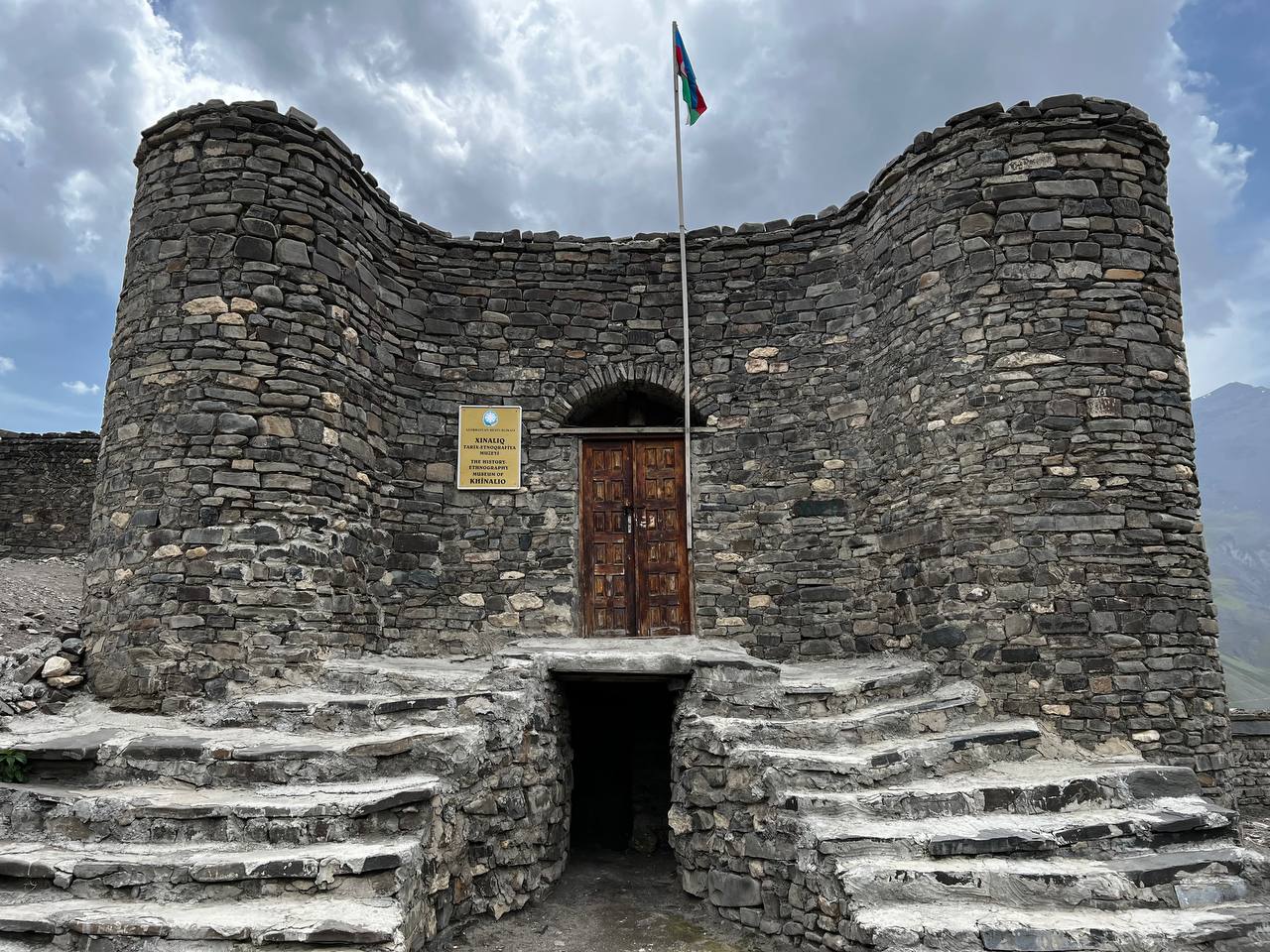
The Historical and Ethnographic Museum of Khinalig started its activities in 2001. The museum building, with an area of 160 square metres, consists of two halls that contain 2,000 exhibits. Here, visitors can see household items and tools, clay and copper vessels, rugs and carpets, stone inscriptions covering various time periods from the Middle Ages to the modern era, all reflecting the rich history of Khinalig life and customs of the local population. The walls of the museum are decorated with carpets woven and donated by the village community.
The museum also exhibits tools used by Khinalig people in the household and economy of the Middle Ages. In the village of Khinalig, the ‘vel’, which is the most indispensable tool of the villagers for harvesting, can also be found in the museum.
There are also ancient scissors, knives, sickles and other household utensils. The material and cultural samples in the exposition show that science and culture developed in Khinalig many years ago. At the same time, ancient manuscripts in Ottoman Turkish, Persian and Arabic confirm that these three languages were widely used in the village in the 13th-18th centuries. These manuscripts include letters and notes found in various places, especially mosques. Most of them are torn and shredded, but fragments of many of them have been combined to make them readable. Manuscripts whose parts have been restored have been printed, with electronic versions prepared. The museum was founded by Khalilrahman Jabbarov, a resident of the village. Many exhibits have been donated to the museum by Khinalig locals.